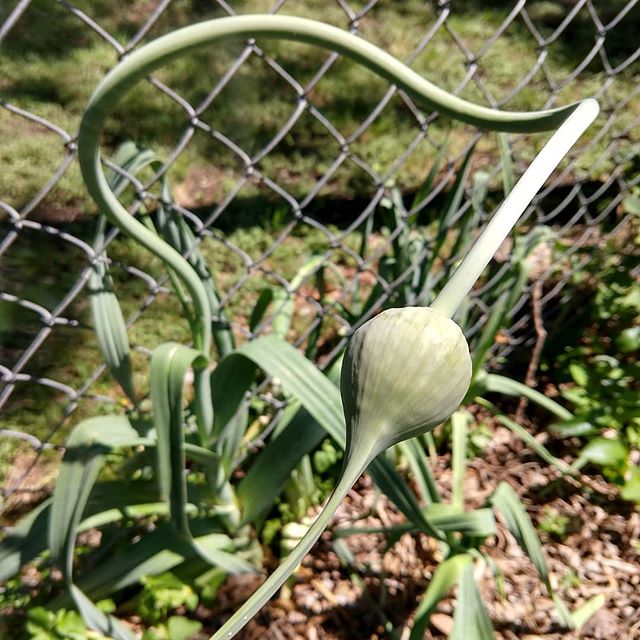Last March, I brought home a bucket of wild onions and garlic plants from a seed swap. The person I got them from said they were from the banks of a local creek appropriately named Onion Creek in their honor. No one around here is really sure if they are wild natives or if they came here with a homesteader years ago and have made themselves at home, i.e. naturalized. Either way, I was glad to get them and establish a low maintenance perennial to my garden.
They struggled that first summer because they spent a little too much time in the bucket before transplanting and the shock of being transplanted right before the heat of a Central Texas summer isn’t ideal for plants that prefer the pleasant creekside conditions.
I mulched them heavily with leaves from around the neighborhood that fall, and put them to bed, hoping for the best in the spring. They have come back with a vengeance this spring, popping back through the mulch and making these:

These oddballs are what we call garlic scapes. They are the flowering bodies of garlic that probably won’t develop into seeds because of the chromosome damage that has accumulated over so many generations of cultivating garlic by planting bulbs/cloves instead of seeds. If you want to really dig in on what that means for the future of garlic and seeds in general, you can read up on landrace seeds and the great work by folks like Joseph Lofthouse to save and bring back genetic diversity in our food crops. His articles on garlic, specifically, are garden nerd candy.
Stepping off of my link soapbox, however, I like more than the novelty of the garlic scapes. I like the layers of complexity that they draw me into in the garden. Pleasant surprises like these always remind me that gardening isn’t like mopping a floor or going to the grocery store, each plant has its own character, like a person or an entire different culture, a different population that has its own rules and norms. If you saw my post about the potato annihilation of 2018, you know that gardening is to expect the unexpected, and that can so often be delightful.
Happy Monday and I wish you enough time to get out in that garden to tinker with a million moving parts and celebrate it.
Keep Growing,
E
Great Book on Your Own Vegetable Varieties:
Breed Your Own Vegetable Varieties: The Gardener’s and Farmer’s Guide to Plant Breeding and Seed Saving
by Carol Deppe
